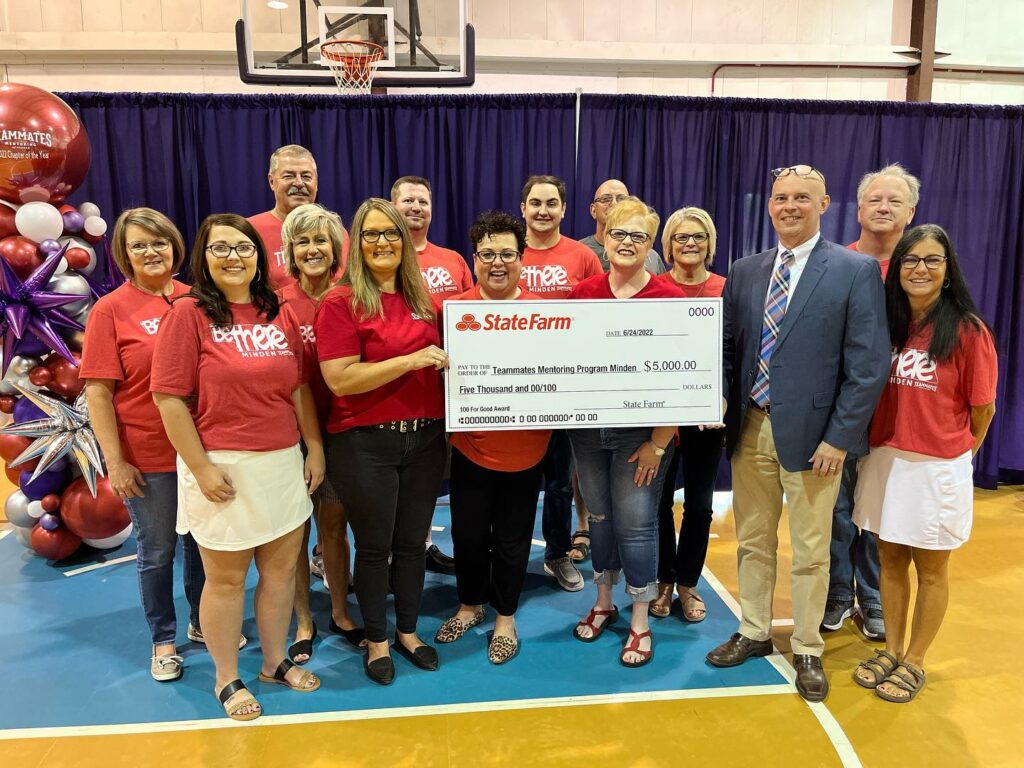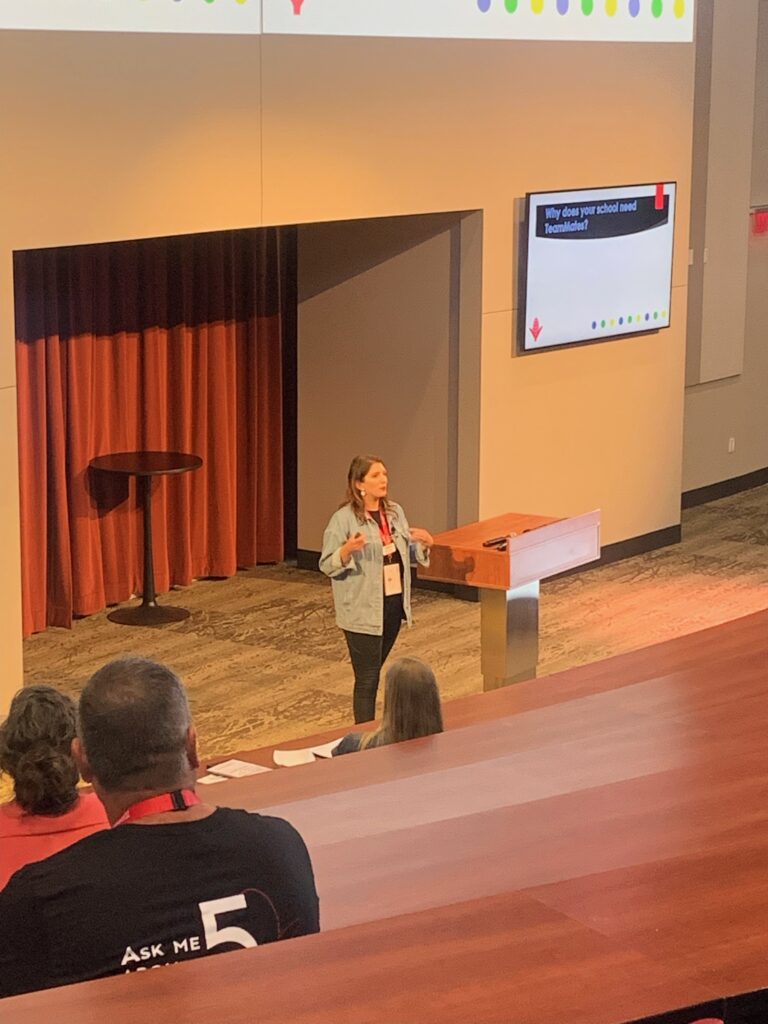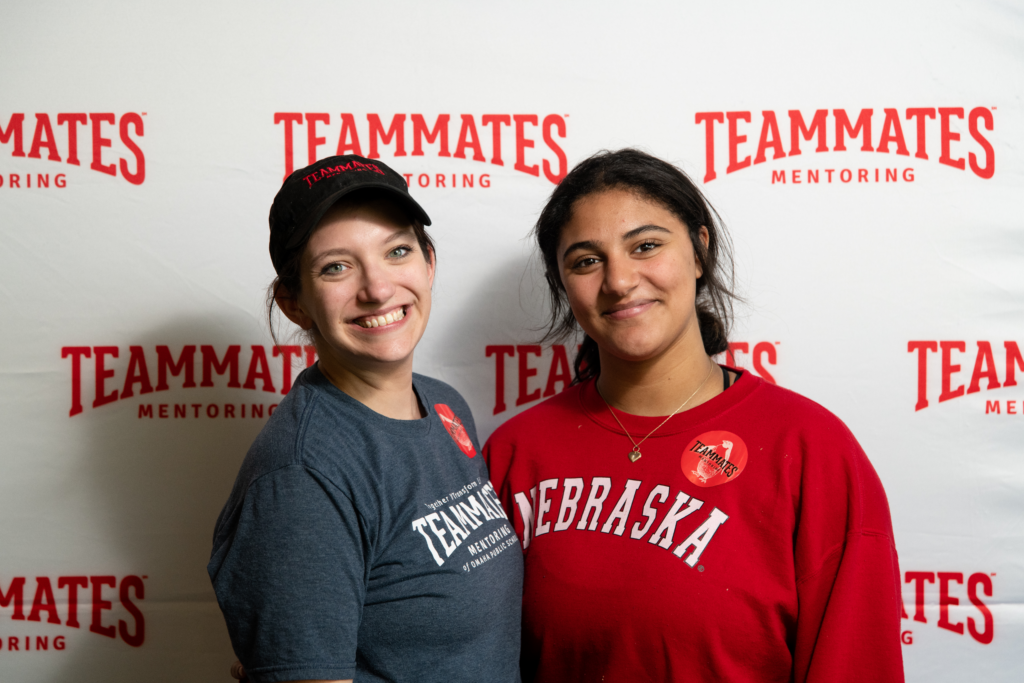How to Recruit: Businesses

Editor-In-Chief
“There is no way these corporate employees are going to care what I have to say.”
– The negative pep talk I gave myself before my first recruitment presentation at a corporation.
After spending a year behind a TV news desk in Lincoln, I was terrified to start my public speaking journey in TeamMates. It was 2015, and I was 24 years old. My job was to recruit enough new mentors to help us hit our vision of 12,000 matches by 2020, and I was the “closing act” for Nebraska-legend, Tom Osborne.
Here’s what was going through my head:
How in the world was I going to follow one of the greatest people on Earth?
How can I tell my story in mentoring if I haven’t truly lived it yet?
WHAT DO I DO WITH MY HANDS?!
If this sounds like you when you’re out on your mentor recruitment journey, don’t worry, you’re not alone. Welcome to the club!

Over the last 7+ years, I’ve learned through mistakes, trial & error, and success in recruiting mentors at small to large companies across the Midwest. Here are just a few tips to get you started.
Step 1: Do your research
Not all companies are a good fit for TeamMates, but in the rise of hybrid workplaces and the emphasis on workplace wellbeing, some businesses may be looking for a nonprofit to partner with. Go to your community’s Better Business Bureau and look for who could be a good fit to recruit.
Another place to look is a business’s website in the “About” section. Several companies share their “Core Values” on the web to help promote their brand and draw in prospective employees. If they have some sort of “community outreach” in their Core Values, they may be open to allowing their employees time off during the day to mentor.

Step 2: Who do you know?
Where do people in your community work? Once you’ve compiled a list of businesses or companies that could be a good fit for mentor recruitment, talk to your network. More than likely, you may know somebody who knows somebody. Your network can consist of:
- Board Members
- Current Mentors
- School employees
- Friends & Family
- Members of other community organizations
Step 2.5: Call the right person
Let’s say you have a great company in mind, but you don’t know anyone who works there or has an in. Don’t give up! Sometimes, all it takes is a simple phone call or email. Go to the company’s website and connect with someone on their community outreach team, branch manager, or someone in human resources. Here’s an example of an email I would send to a prospective company:
Hi there!
I’m Hannah Miller with the TeamMates Mentoring Program. We are a nonprofit focused on building friendships between students and safe, caring adults. We currently have 36 kids in Bennington Public Schools waiting for a mentor. We were wondering if someone from our team could speak with your employees to promote mentoring in our schools?
According to years of research at the TeamMates Mentoring Program’s National Office, 82% of TeamMates mentors report feeling more engaged at work as a result of meeting with their mentee. Engagement can help lead to higher productivity and happiness in the workplace. This is a win-win!
Our mentors and mentees meet once a week in school during the day for about 30 minutes to an hour, we typically see this during the lunch hour.
When would be a good time for us to come meet with your staff for about 30 minutes? Feel free to give me a call if you have any questions.
Have a great day!
Hannah Miller
Step 3: The Presentation
You locked in a 30-minute recruitment presentation—BOOM! Now what?
Here are a couple of quick tips I recommend when giving a presentation on TeamMates:

- Remember your “why” – People resonate with a personal story. Why did you decide to get involved with TeamMates? Don’t be afraid to be vulnerable. I know that’s not always easy, but when you show your purpose, it will inspire others to do the same.
- Don’t get lost in the weeds – Get to the point and share the basics. A typical presentation outline should be the following:
- Your “Why” for joining TeamMates
- What mentoring looks like (once a week, in school, etc.)
- How mentoring can improve their wellbeing (engagement at work, hope, happiness stats)
- What matches do together (board games, walks, crafts, Legos, etc.)
- How to sign up
- Ask for questions
Step 4: Follow Up
Pass out a sign-up sheet before starting your presentation. You can download a copy of mine below.
Assure the crowd that they aren’t signing up for anything major, this is just an informational email. You should plan to send out that follow-up email within 24 hours of your presentation. Here’s an example of the follow-up email I like to send:
Hi there!
Thank you for meeting with me about the TeamMates Mentoring Program. We would love to have you consider becoming a mentor in Bennington Public Schools. Again, there are 36 students waiting for a mentor, and we’d love to get you matched soon.
To become a mentor, click here.
As a TeamMates mentor, you can:
– Meet with your mentee in school during the day once a week.
– Play board games, talk, go for a walk on campus, or work on a craft.
– Build a friendship!
Know someone who could be a good mentor? Nominate them here.
Our next training date is October 3rd at the school. Even if you’re still unsure if TeamMates is right for you, we’d love to see you and answer any questions you may have.
Thanks again, and have a great day!
Hannah Miller
Step 5: Keep in touch

Never underestimate the impact of a handwritten thank you note! After each recruitment presentation, write your contact and the person you connected with, a note.
This helps build trust and reminds them that your program is committed to the relationship.
To design your own thank you note like this one, check out our design template here.
I hope these tips help in recruiting more mentors for students in your community!
If you need anything at all, please do not hesitate to reach out and schedule an appointment with me.
